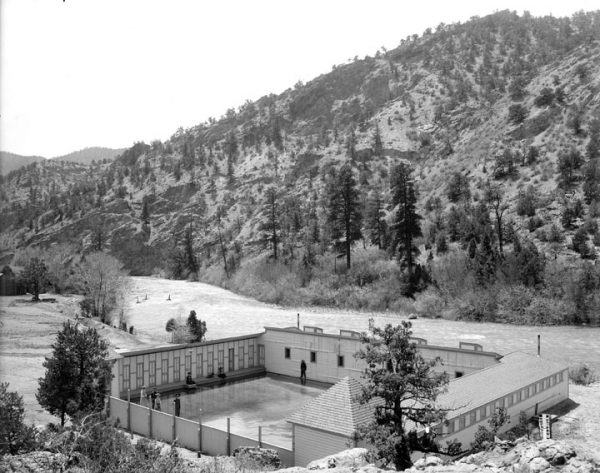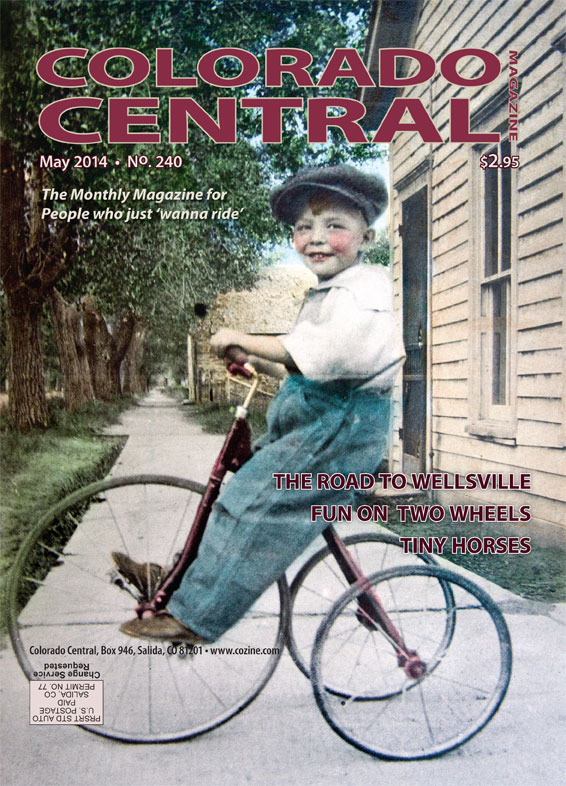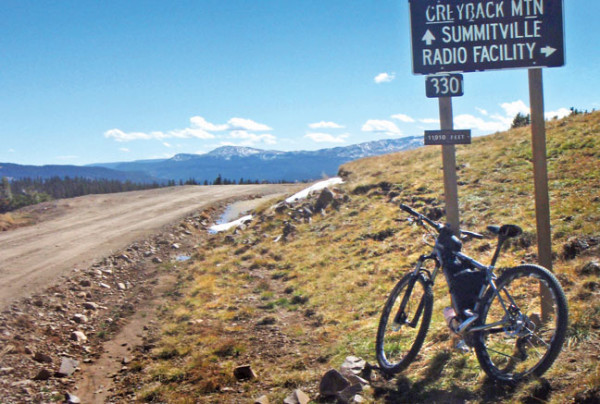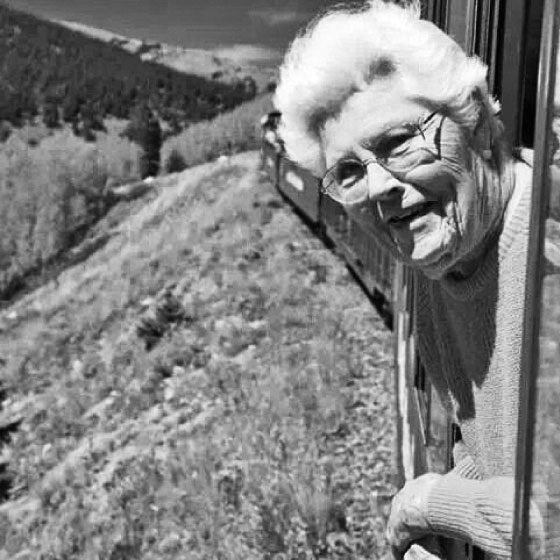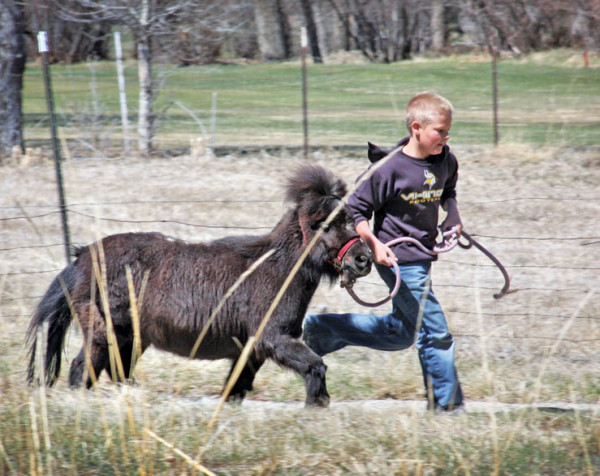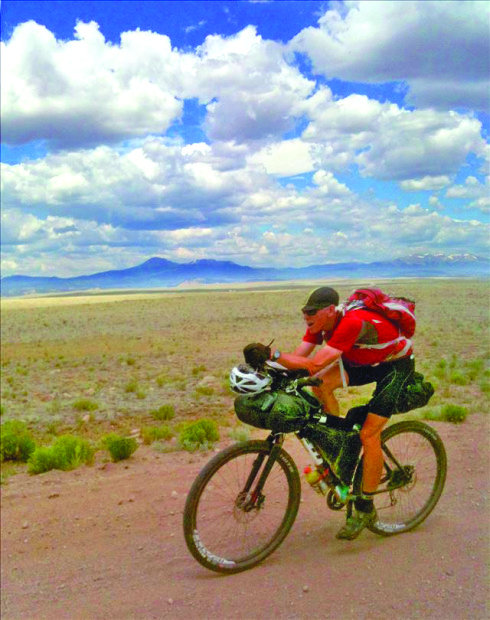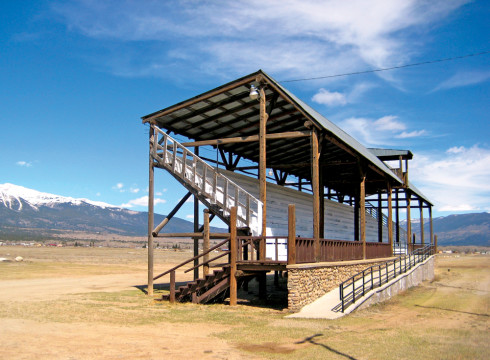By Ron Sering
Not much goes on these days in sparsely populated Wellsville, a few miles east of Salida, off U.S. Hwy 50. Home now to a couple of modest mining and milling operations and several private residences, the booms that had periodically rippled through the state have passed it by for many years. But that was not always the case.
There is some evidence that Native Americans once spent winters in the area, but Wellsville, the town, was founded in the late 1800s by namesake George Wells. Drawn by the area’s mineral wealth, miners worked the dry hills and canyons for gold, silver, copper, and quick lime, but most prominently for travertine, a sedimentary rock commonly formed from the action of hot springs. Prized as a building material since Roman times, travertine from Wellsville quarries was used in numerous public building projects, including the state Capitol in Denver and the Department of Commerce building in Washington D.C.

